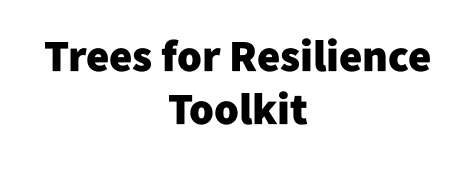MAPPING
Find Out What You Have
The most powerful way to understand a community’s tree canopy and urban forest is through digital mapping. Today’s technology allows for detailed depiction of the natural resource and the ability to compare with other GIS layers of a jurisdiction’s infrastructure. Having accurate and up-to-date data layers will make the analysis more useful.
Considerations about MAPPING
High-resolution GIS tree canopy layer (and ideally LiDAR) is best to determine characteristics of forest: deciduous vs. coniferous, health decline, etc. and to use with other GIS layers for useful assessment and analysis. Be aware that often aerial imagery for infrastructure mapping is “leaf-off,” when summer images are needed for complete tree canopy layer (resources below provide more on mapping specifications and process).
- A tree inventory can be incorporated into the tree-canopy GIS layer and may be a great opportunity to collaborate with the community.
- Depending on community’s rate of growth and development activity, update every five years.
Resource Links by Topic
- South King County Tree Canopy Assessment Initiative (Plan-IT Geo) – A nice summary of a multi-city mapping project. Includes specifications of data inputs and informative reporting.
- Puget Sound Urban Canopy Project (Davey/iTree) – Conducted to assess land cover and priority planting locations within communities in the Urban Growth Areas of Snohomish, King, and Pierce counties.
- WA DNR GIS Open-Source Data 2024 (WA DNR) – Online natural resource bank of GIS data by category, application, or geography (scroll down to ‘Urban Tree Canopy’ for Pierce, King and Snohomish counties).
- Tree Canopy Data – High Resolution Change Detection (WDFW – WRIA) – Check or request high-resolution GIS tree canopy data depicting mature vegetation (>25’ tall) and change detection (mostly western Washington).
- Tree Canopy Data 2024 (USDA Forest Service, PlanIT Geo, Arbor Day Foundation) – Online tree canopy data collected for communities across the U.S., the first-ever countrywide software application and nationwide data for assessing and monitoring community tree canopy.
- Strategic National Urban Forest Inventory (USDA Forest Service) – Publication on 2020 urban forest inventory and analysis of select cities that included Seattle.
- Tree Canopy Data 2024 (USDA Forest Service, PlanIT Geo, Arbor Day Foundation) – Online tree canopy data collected for communities across the U.S., the first-ever countrywide software application and nationwide data for assessing and monitoring community tree canopy.
Photo credit: City of Shoreline – Green Street design
